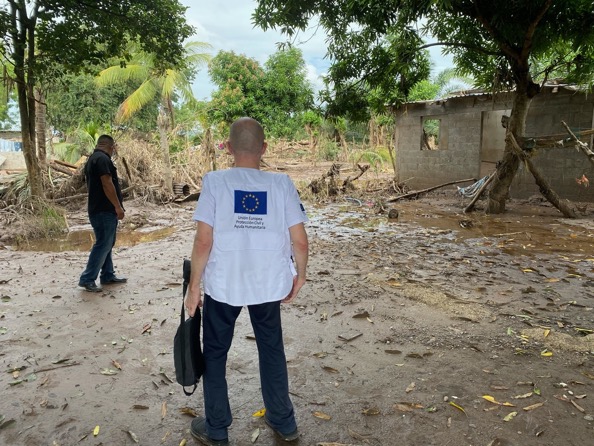Honduras: Eta and Iota Hurricanes Emergency Response Mission 🇭🇳

San Pedro Sula, Honduras, November 2020
In November and December 2020, I travelled to Honduras to support the design of a humanitarian response to the devastating Hurricanes Eta and Iota. The scale of destruction was immense, and the response was even more complicated by the ongoing COVID-19 pandemic, making it harder to assist those displaced and to ensure safety in overcrowded shelters.
From Panama City, I flew to Tegucigalpa, where I began the mission with meetings and logistical planning before heading to the affected areas. Despite the seriousness of the situation, I was deeply charmed by the kindness and resilience of the Honduran people, who, even in the face of adversity, remained welcoming and full of strength.
Hurricanes Eta and Iota – A Double Disaster
Hurricanes Eta and Iota struck just two weeks apart in November 2020, causing widespread devastation across Honduras and much of Central America.
• Eta (Category 4) made landfall on 3 November, bringing torrential rains, landslides, and extreme flooding.
• Iota (Category 5) followed on 17 November, hitting many of the same areas that were still underwater from Eta.
Entire communities were wiped out, with homes, roads, and bridges destroyed. More than 4 million people in Honduras were affected, with hundreds of thousands displaced. The hardest-hit areas were low-lying communities, where rivers overflowed, leaving families stranded on rooftops waiting for rescue.
A Humanitarian Response Amid a Pandemic
The response required urgent action, but the pandemic added a layer of complexity. Shelters were overcrowded, making physical distancing nearly impossible, and the risk of disease outbreaks was high.
Our work focused on:
• Emergency shelter – Providing safe spaces for displaced families, ensuring they had access to clean water, sanitation, and medical assistance.
• Food and essential supplies – Distributing food, hygiene kits, and protective equipment to families who had lost everything.
• Health and COVID-19 prevention – Supporting local authorities in managing health risks inside shelters while ensuring access to basic medical care.
• Long-term recovery – Planning for housing reconstruction, infrastructure repairs, and livelihood support to help communities recover beyond the immediate emergency.
Exploring Valle de Ángeles and Santa Lucía
Before heading to the most disaster-affected regions, colleagues from the EU Delegation took me on a short trip outside Tegucigalpa to Valle de Ángeles and Santa Lucía.
• Valle de Ángeles was a picturesque colonial town, filled with cobblestone streets, artisan shops, and lush green hills.
• Santa Lucía had stunning views over the valley and a charming old church, a peaceful escape before diving into the intense humanitarian work ahead.
San Pedro Sula and Surrounding Disaster Zones
We then travelled by car to San Pedro Sula, the economic heart of Honduras, which had been badly flooded. From there, we visited multiple disaster-affected areas, witnessing firsthand the destruction left by the storms:
• Choloma – One of the most heavily flooded urban areas, where entire neighbourhoods were submerged.
• Pimienta and Potrerillos – Towns where residents lost their homes and livelihoods, struggling to restart their lives.
• Azacualpa, Pueblo Nuevo Petoa, Gualjoco, Santa Bárbara, Gualala, and Chinda – Rural areas where bridges had collapsed, leaving communities cut off from aid.
The resilience of the people we met was inspiring. Even in destroyed villages, they were working together, helping neighbours, and finding ways to rebuild their lives.
A Stop in Comayagua – A Moment of History
On the way back to Tegucigalpa, we stopped in Comayagua, a city known for its colonial heritage and the oldest clock in the Americas. Walking through its historic centre, I admired the beautiful cathedral and charming plazas, a brief but much-needed moment of reflection before wrapping up the mission.
A Mission That Left a Lasting Impact
Honduras left a deep impression on me—not just because of the devastation I witnessed, but because of the incredible strength of its people. The sense of solidarity among communities, the hard work of local responders, and the dedication of humanitarian partners made it clear that, despite the challenges, Honduras would rise again.
As I flew back to Panama City, I carried with me a renewed sense of purpose—knowing that, even in the face of tragedy, the human spirit remains unbreakable.
Click here to access the album.
